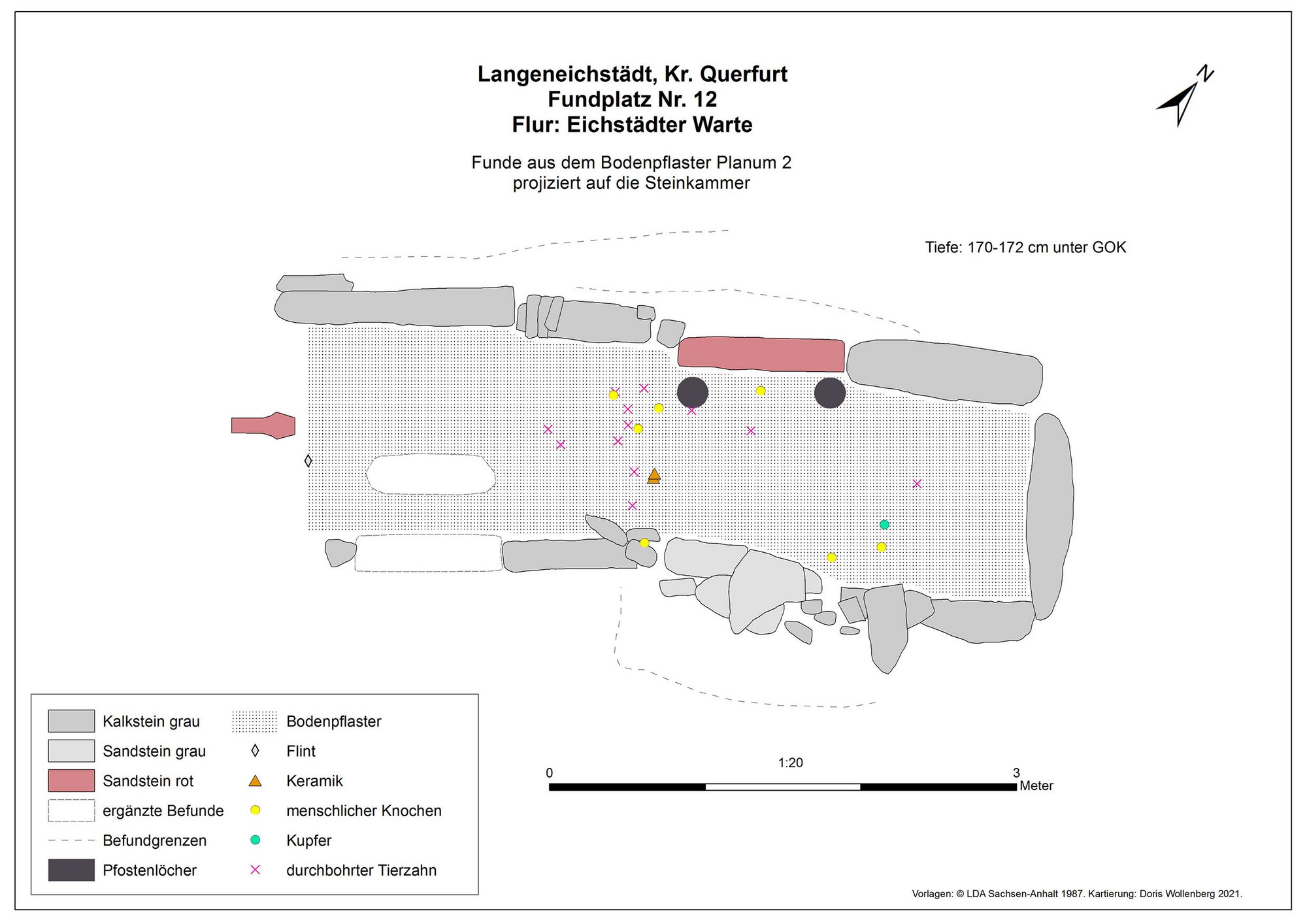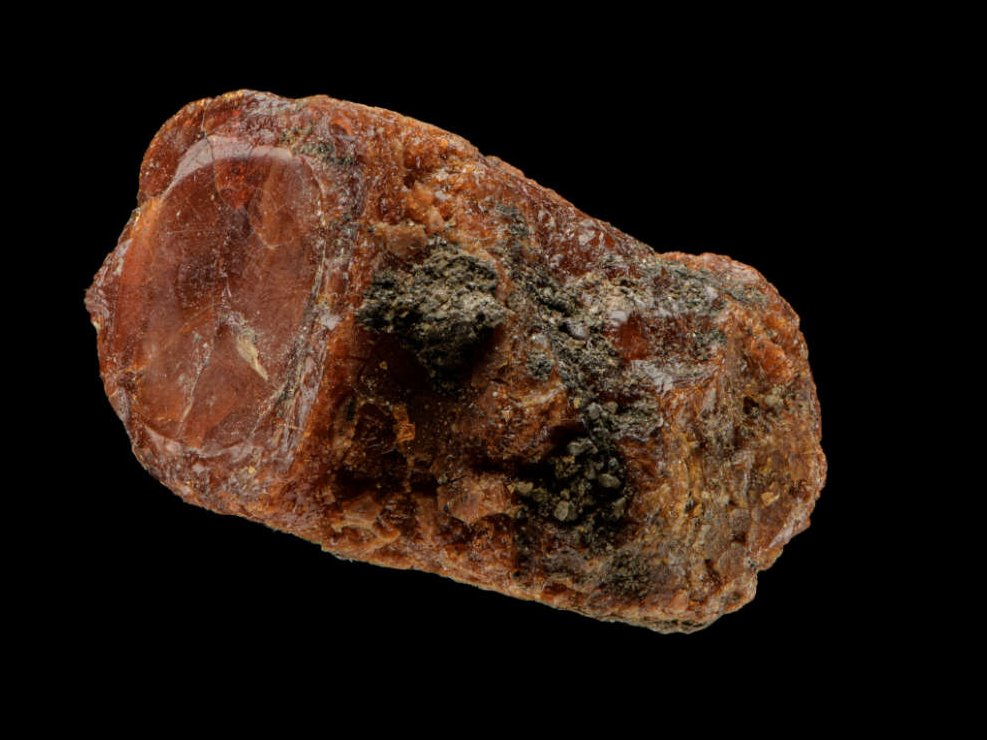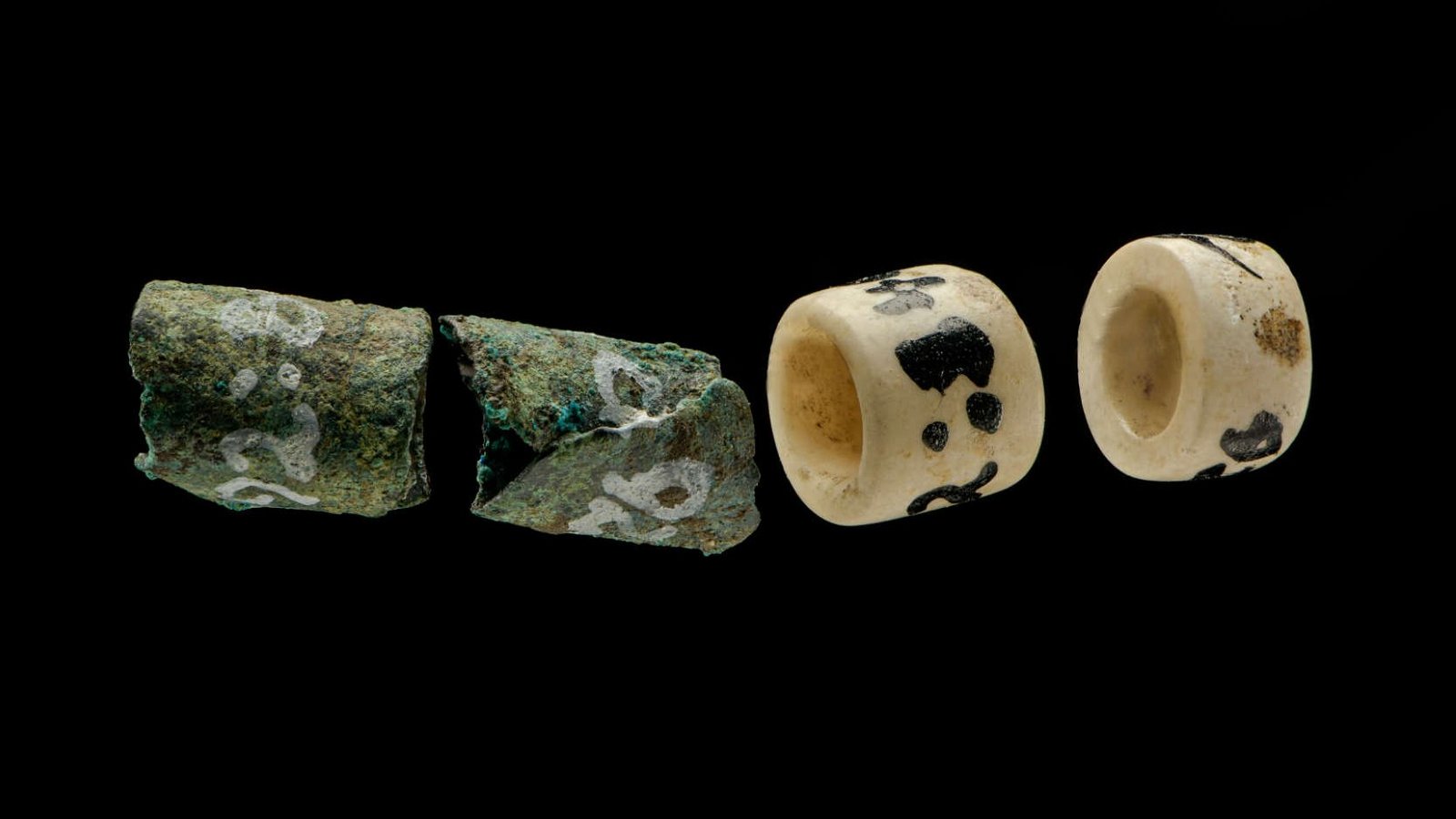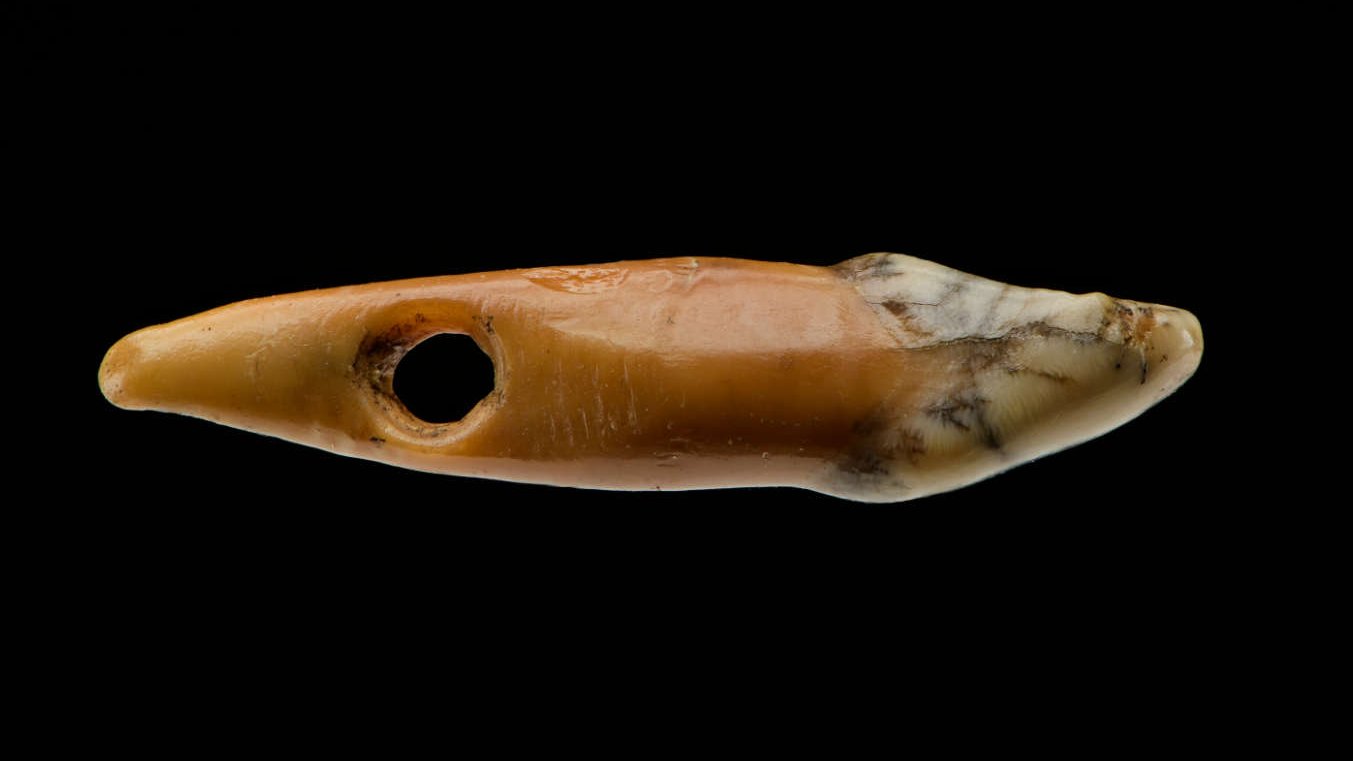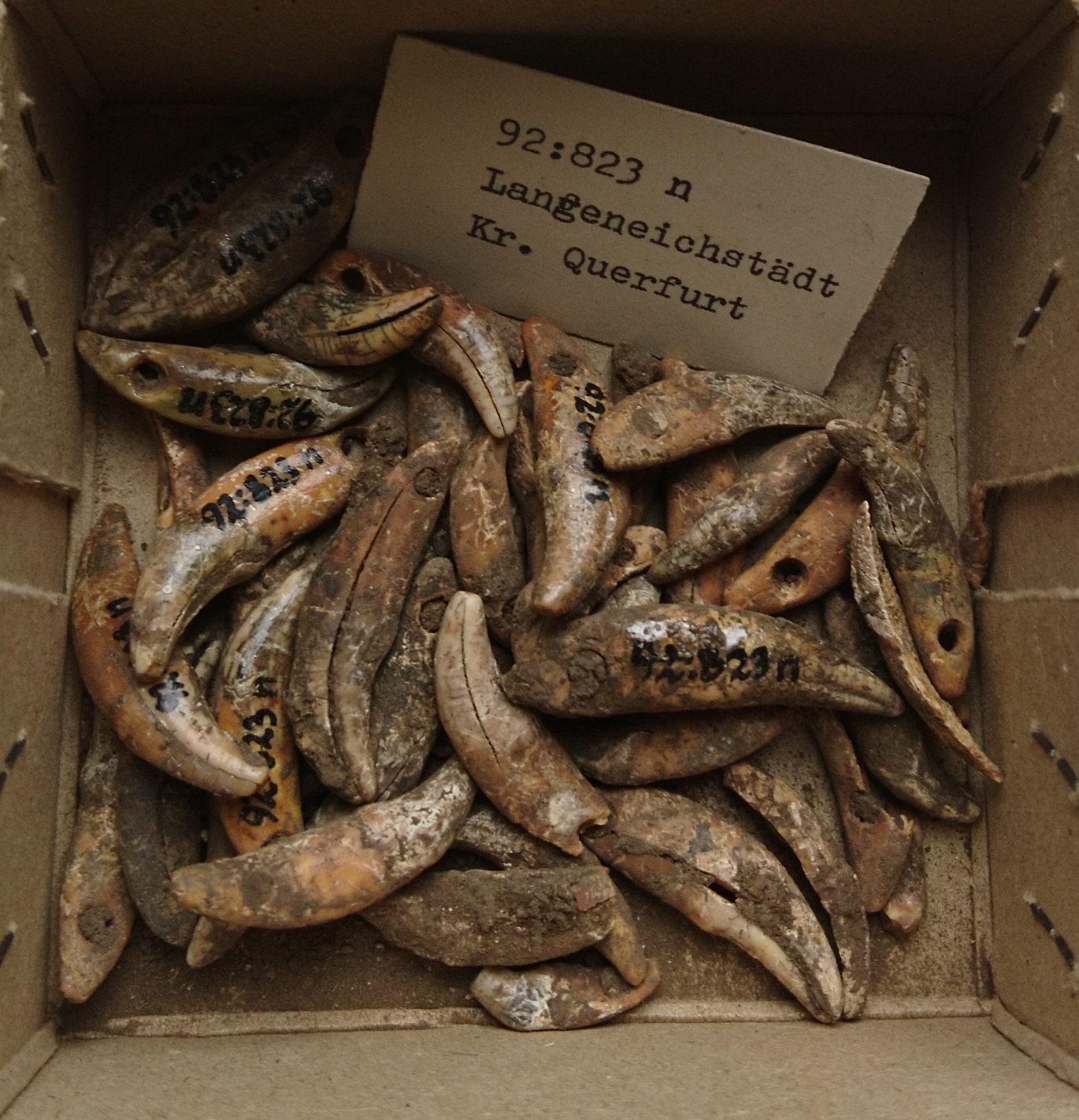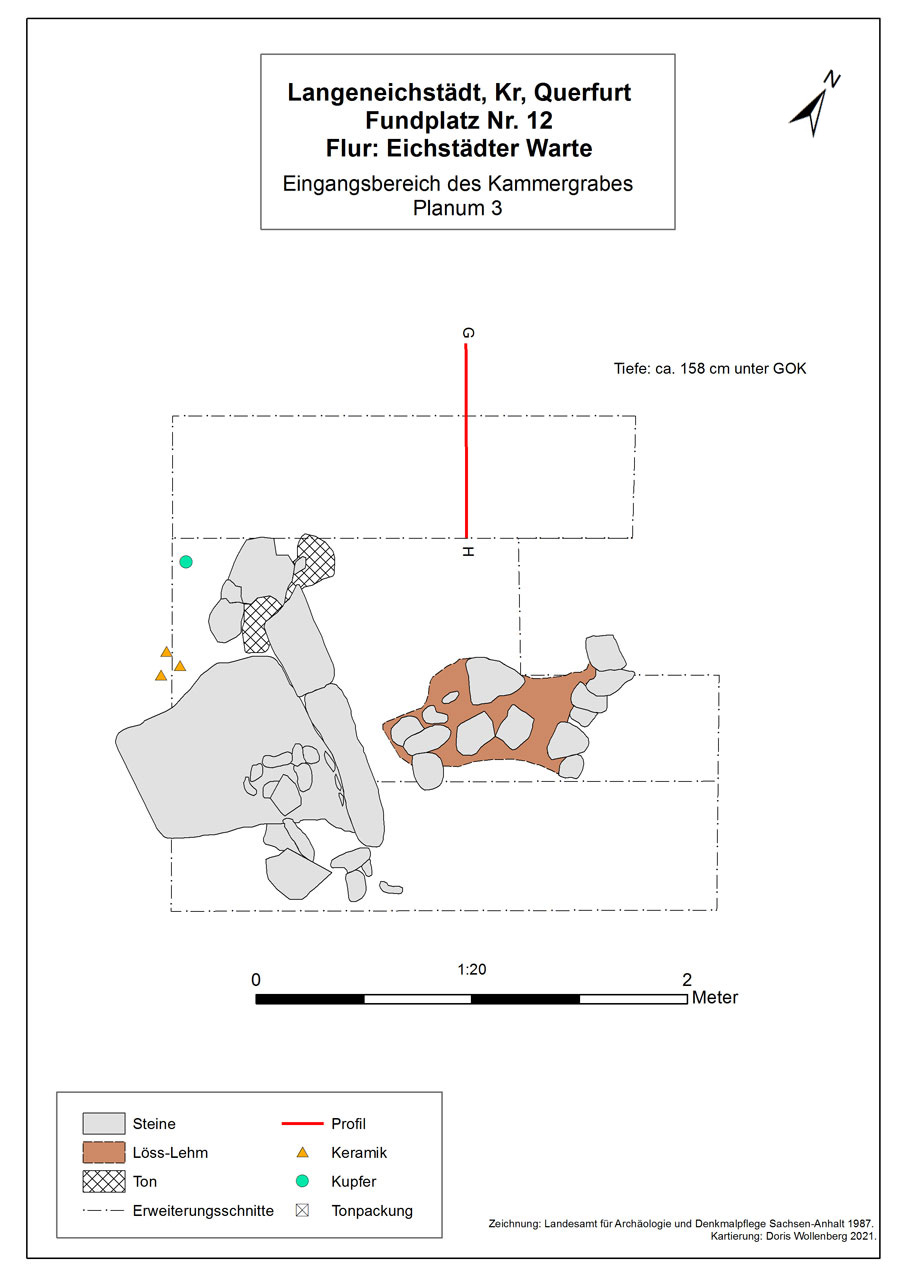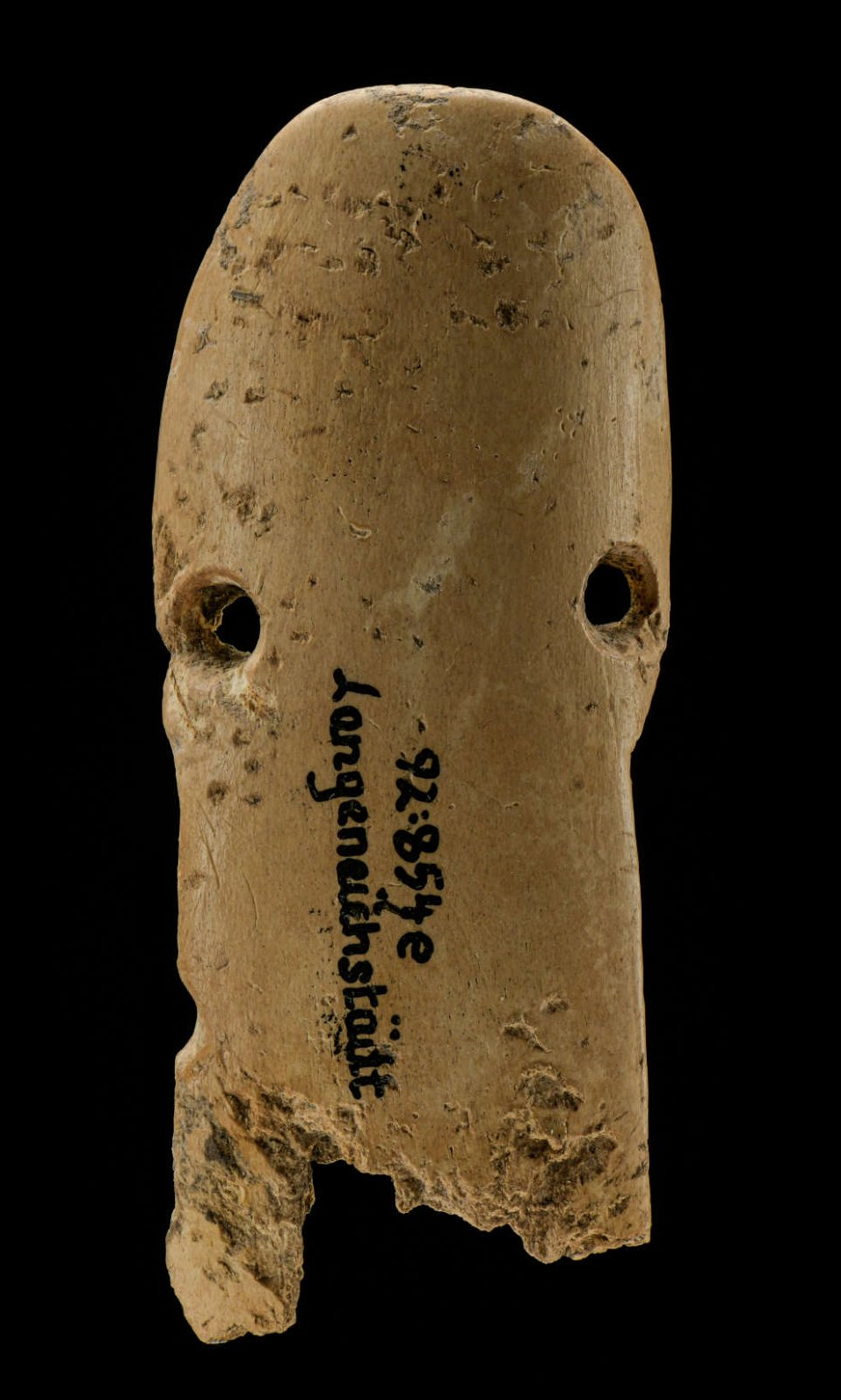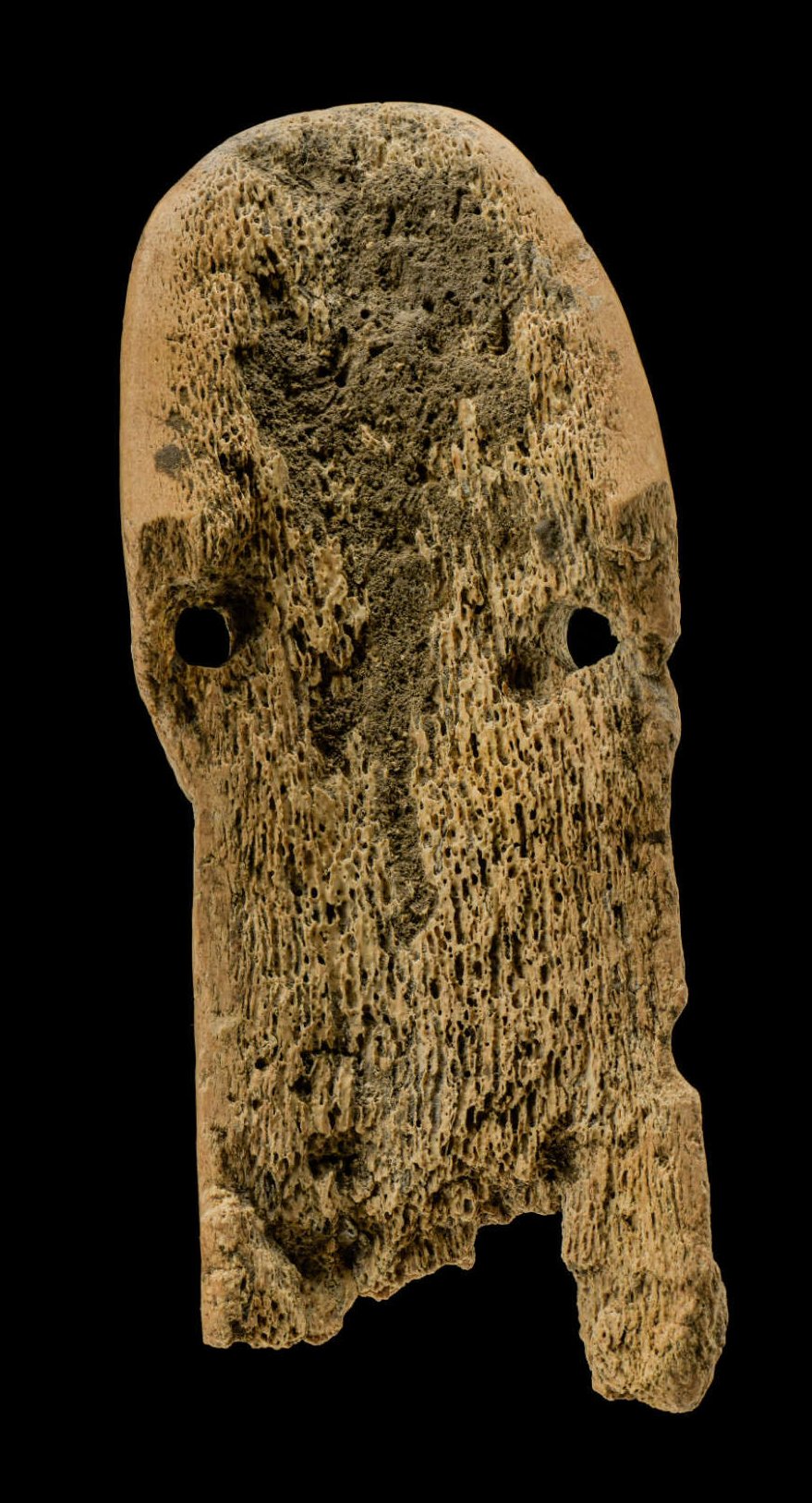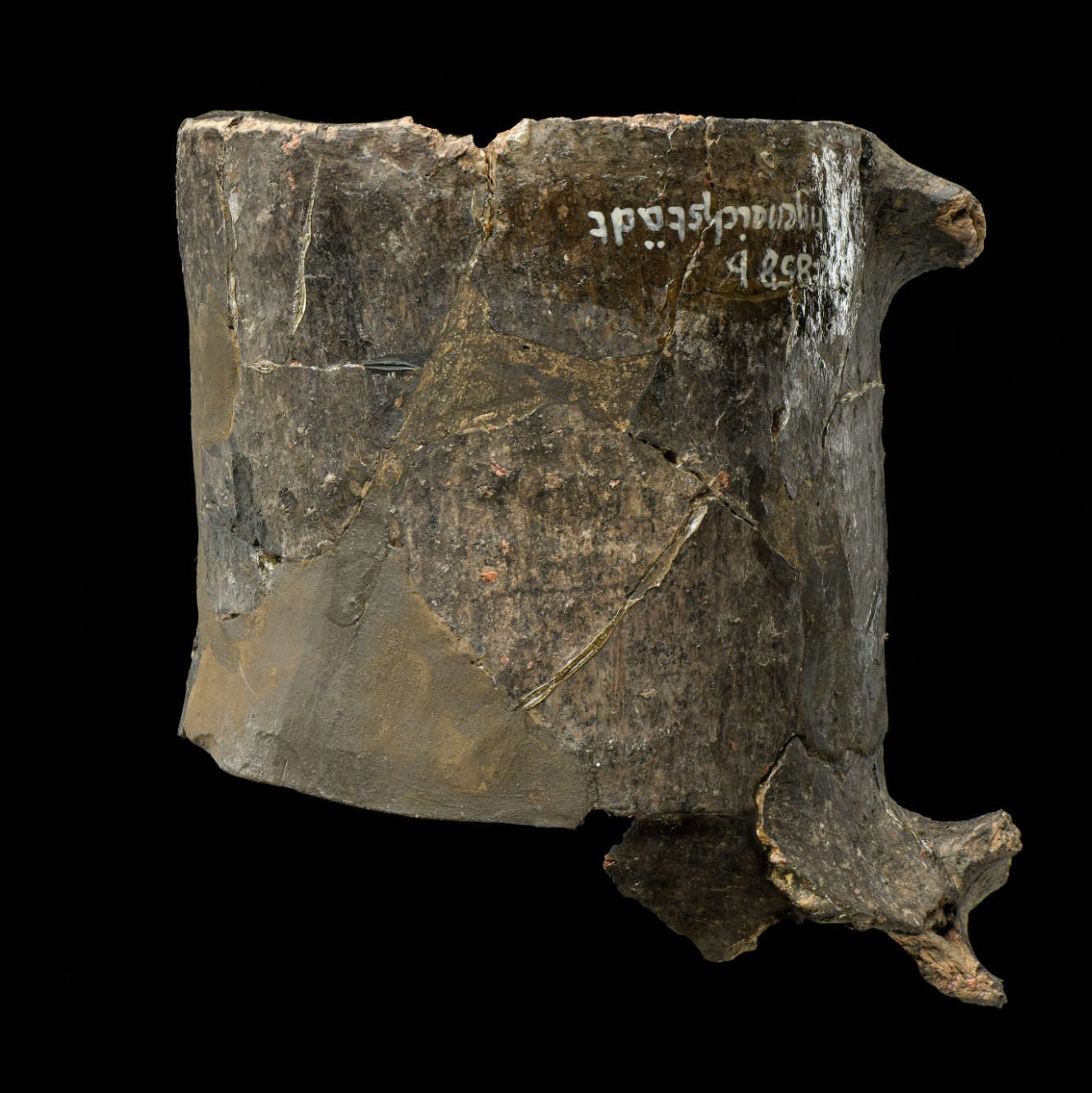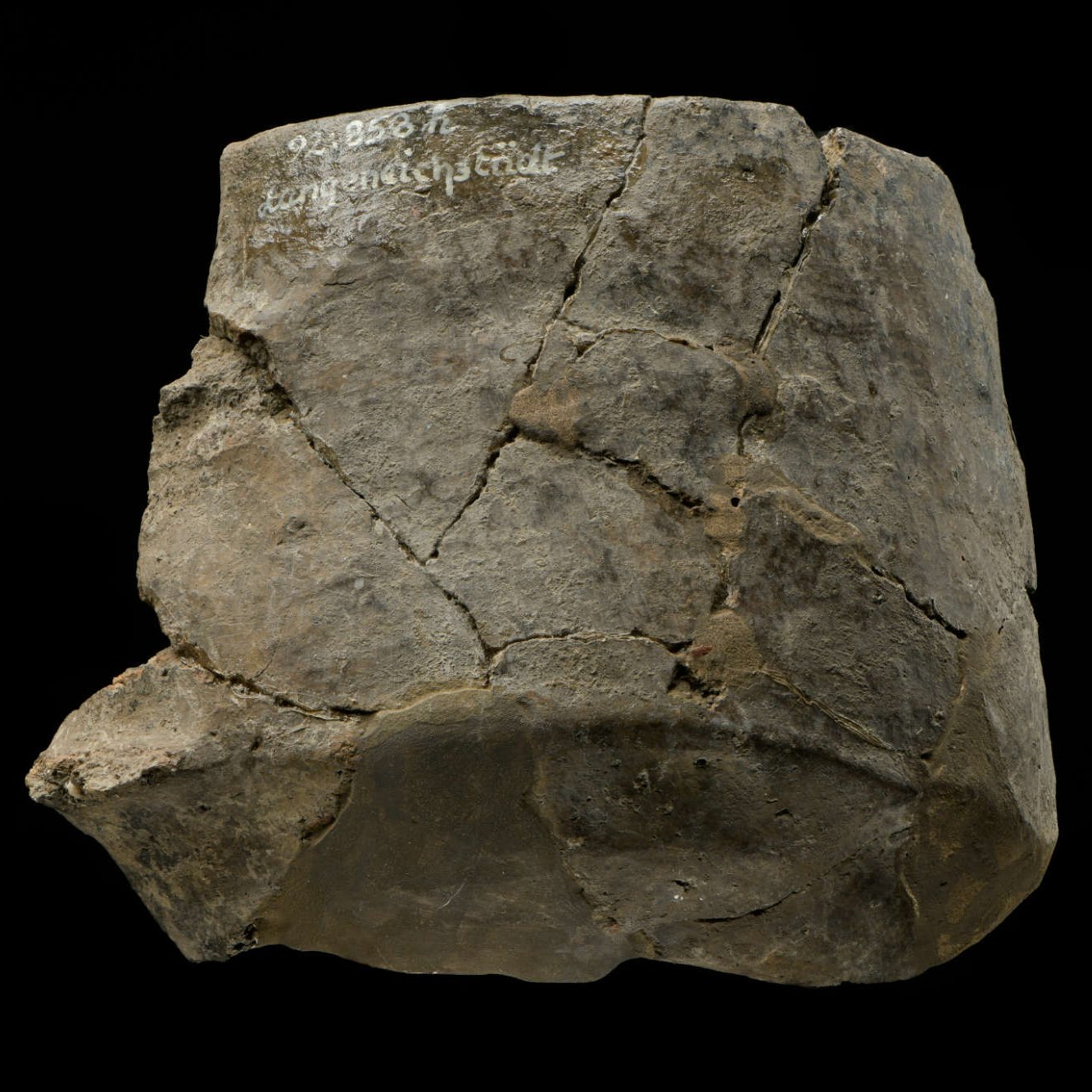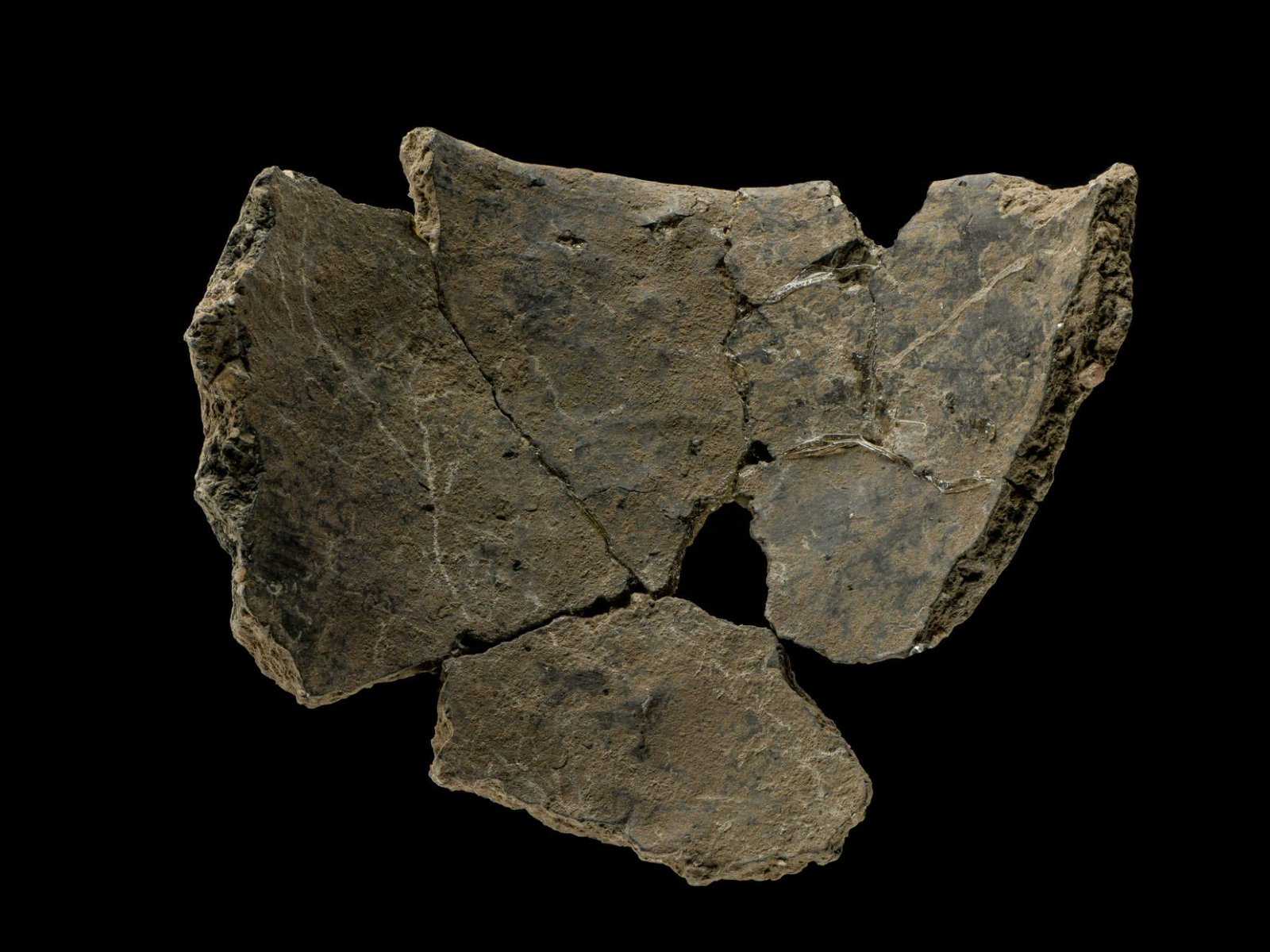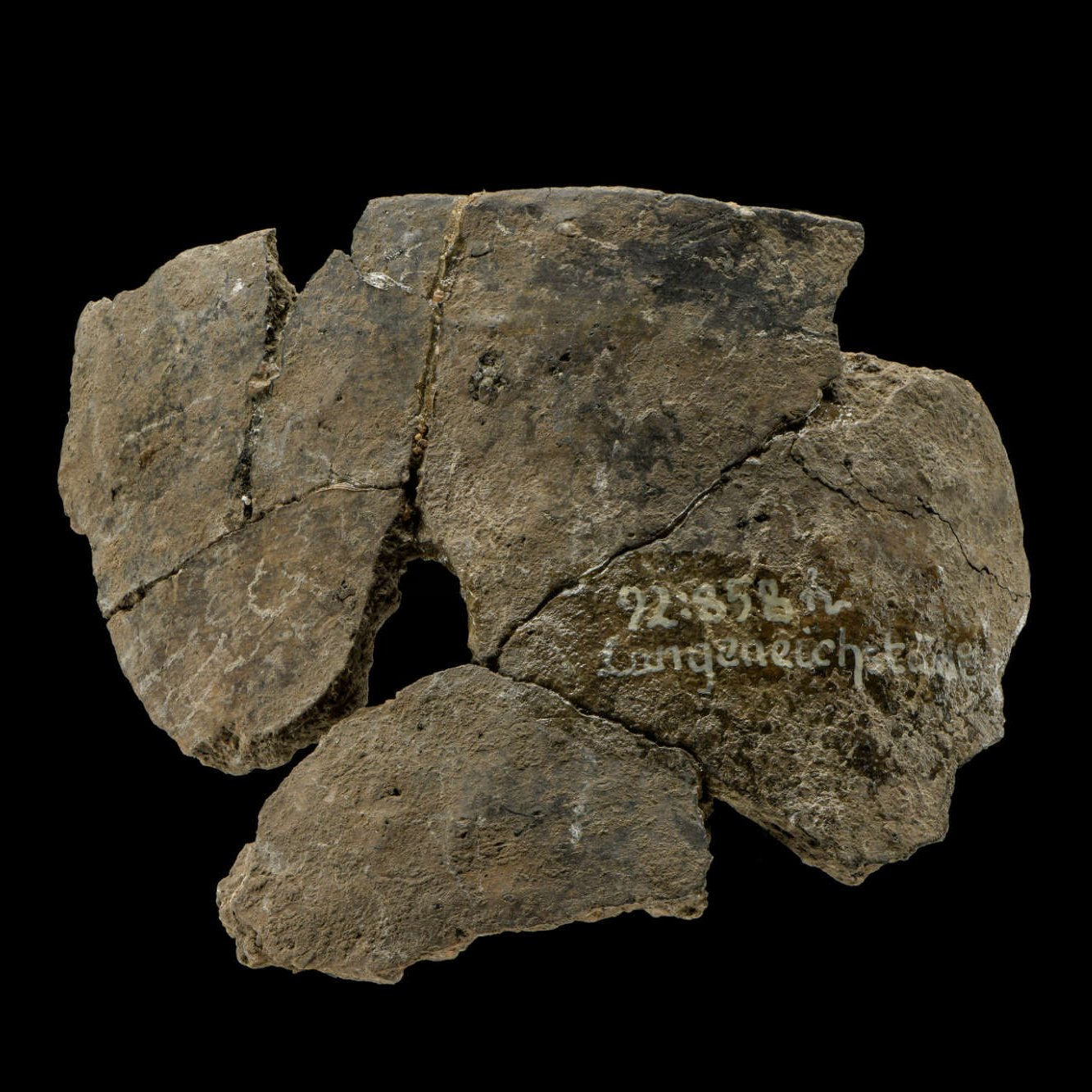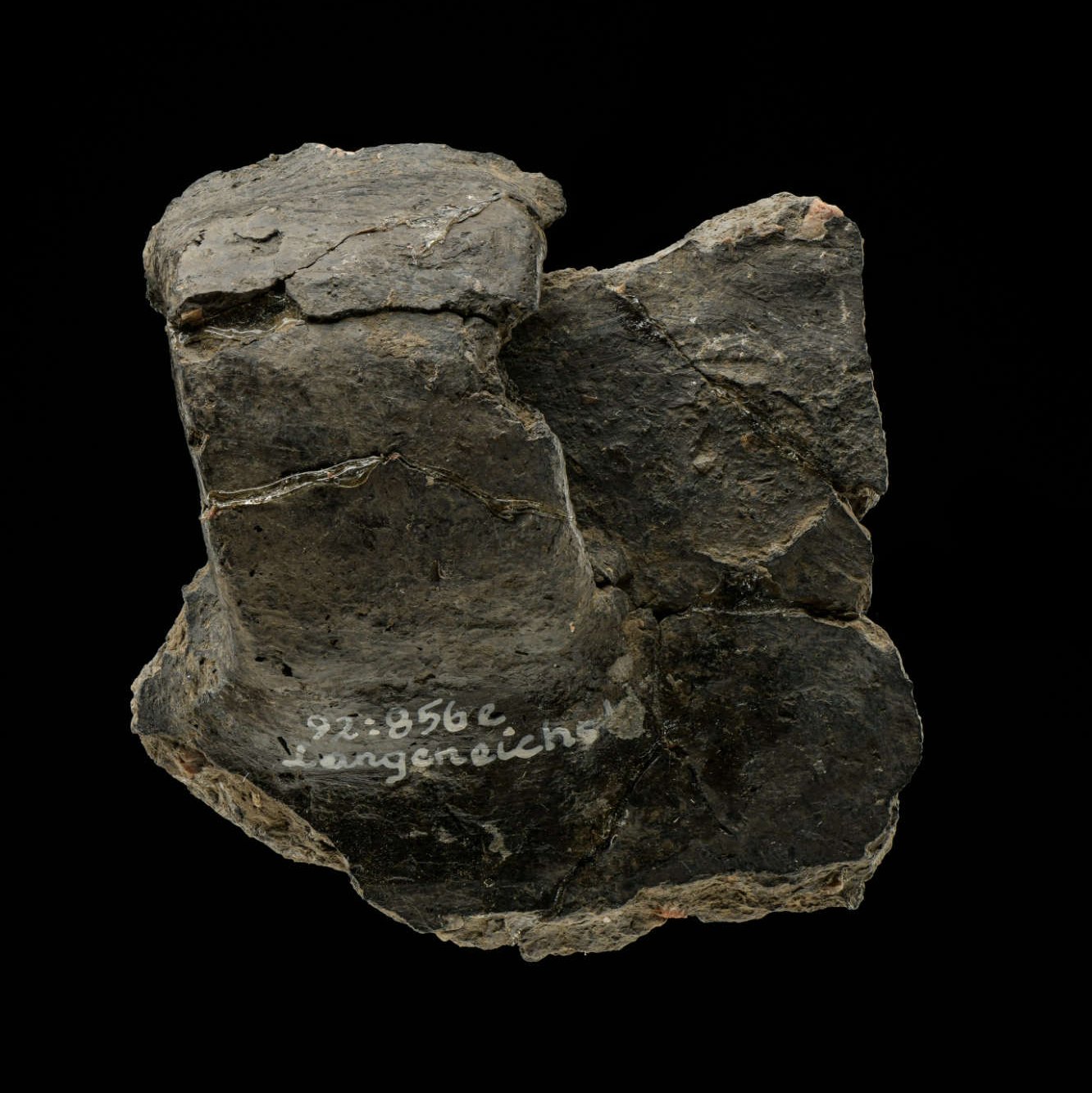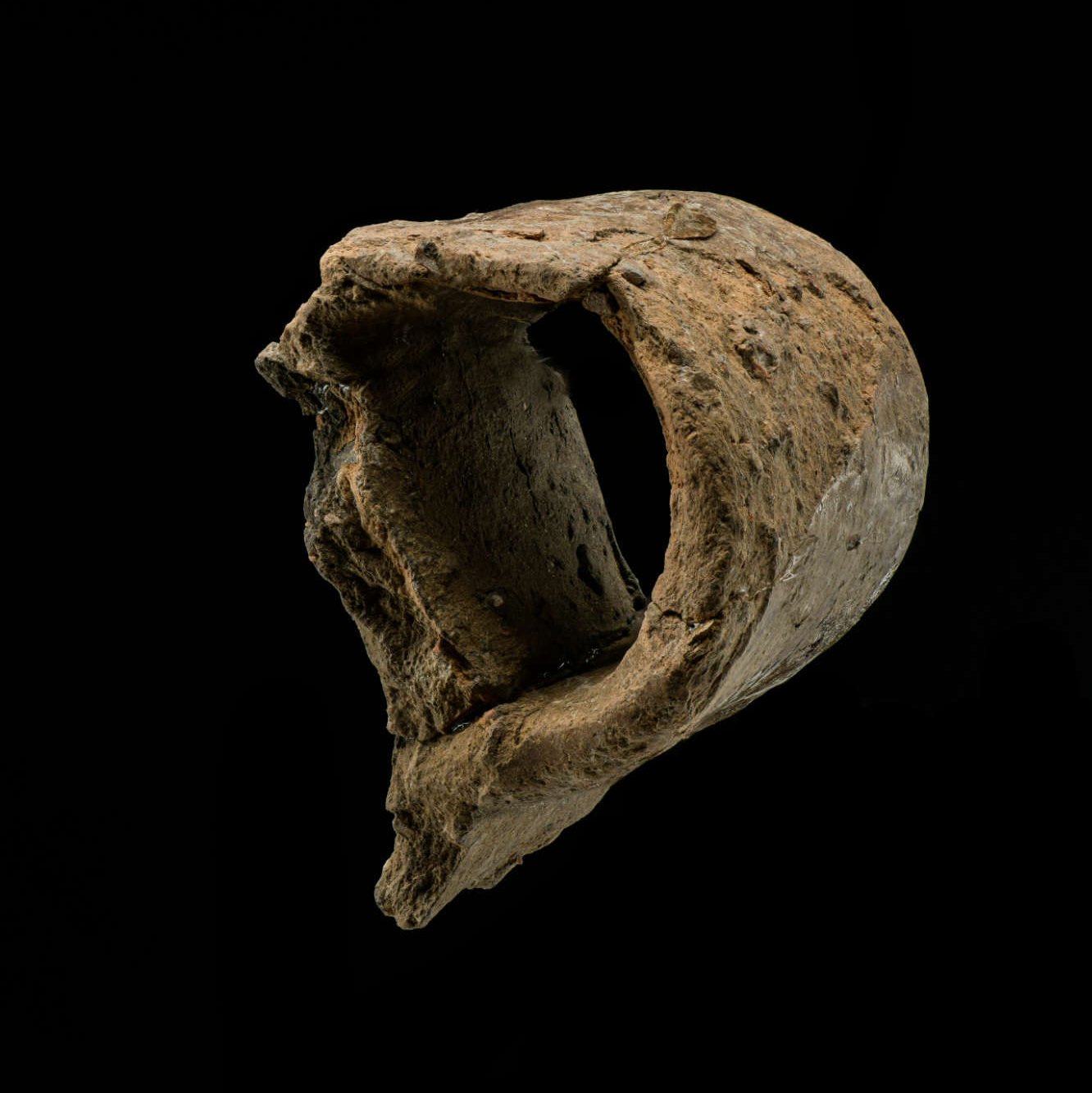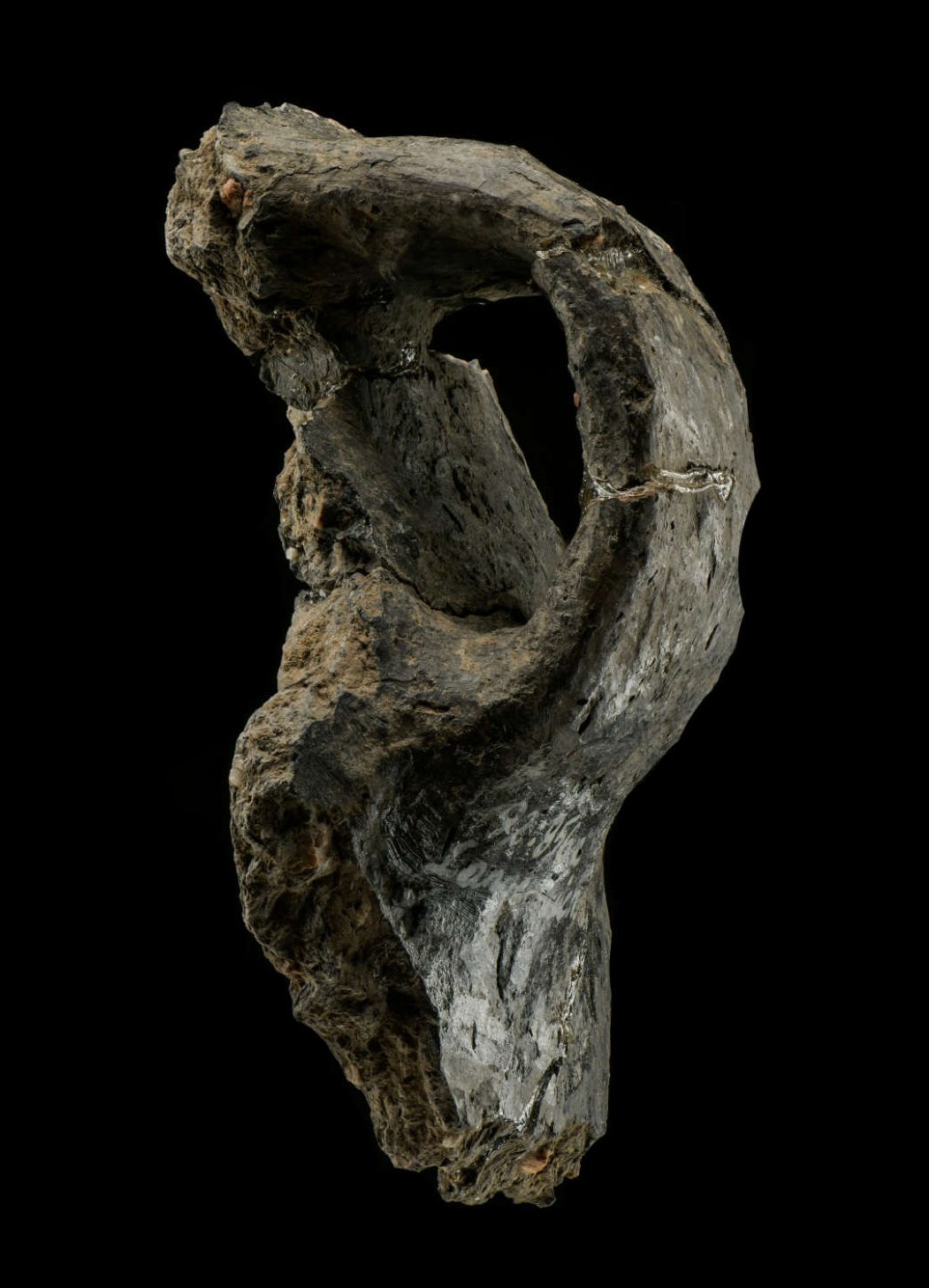Stone chamber tombs were often built as collective graves. This means that the graves were not constructed for a single person, but served as a burial place of a small community that was visited again and again.
In the stone chamber tomb of Langeneichstädt, over a long period of time, probably several centuries, different individuals were buried. The distribution of finds indicates that the burial chamber was cleared at regular intervals to make room for new burials. The tomb was opened several times and the mortal remains of the dead were removed together with their costume such as jewellery and parts of their clothing. For this reason, only a few and mainly fragmented finds were discovered inside the burial chamber.
Dating & Period of use
Who buried the dead in Langeneichstädt?
The bulk of the find material comes from the entrance area and from the area immediately adjacent to the southern chamber wall. Apart from human skeletal remains, some stone artefacts, animal teeth, and single copper objects, the main finds were highly fragmented pottery. These can mainly be assigned to the following cultural groups:
- Walternienburg culture (3350–3100 BC)
- Salzmünde culture (3375 to 3100 BC)
- Bernburg culture (3100–2800 BC)
Chamber tombs and collective burials are characteristic of the Walternienburg and Bernburg cultures. For the Salzmünde culture, however, this practice is unusual. The occurrence of finds from the Salzmünde culture in a chamber tomb of the Walternienburg/Bernburg culture therefore raises questions about possible cultural contacts between the two groups.
Human bones from the lowest burial horizon recently yielded two radiocarbon dates, which place the oldest occupation of the burial chamber between 3369 and 3105 BC. Thus either the Walternienburg or Salzmünde culture qualifies as the possible builders of the monument.
The tomb was revisited over several centuries – lastly apparently by people of the Corded Ware culture (2800–2050 BC). This is attested by a radiocarbon dated fragment of charcoal from the upper layer of the slab paving. It dates to the period 2890–2630 BC. In Langeneichstädt, we thus have another example for the reuse of older megalithic tombs by the Corded Ware culture, a phenomenon already documented several times in Middle Germany.
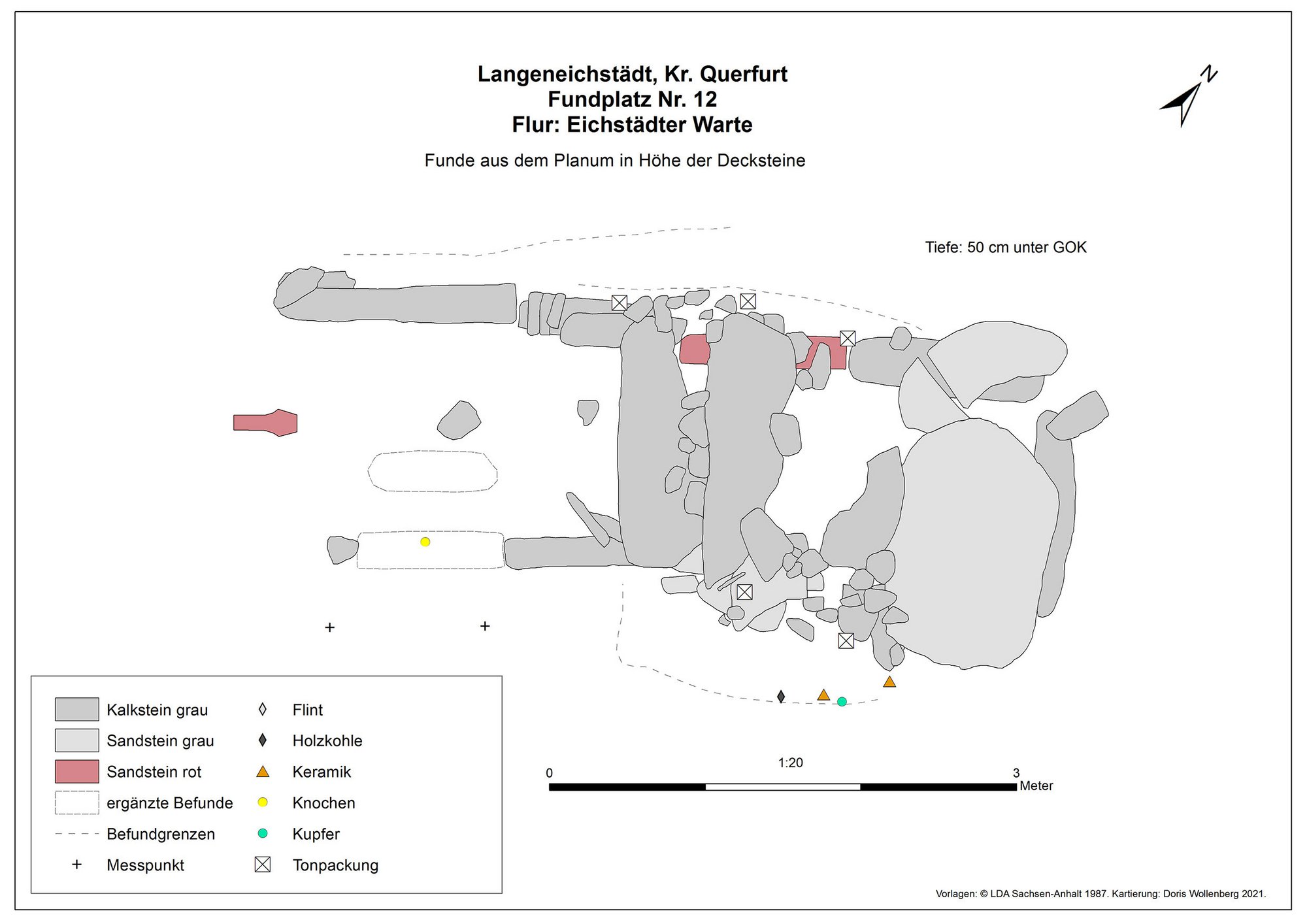
The Dolmen Goddess menhir
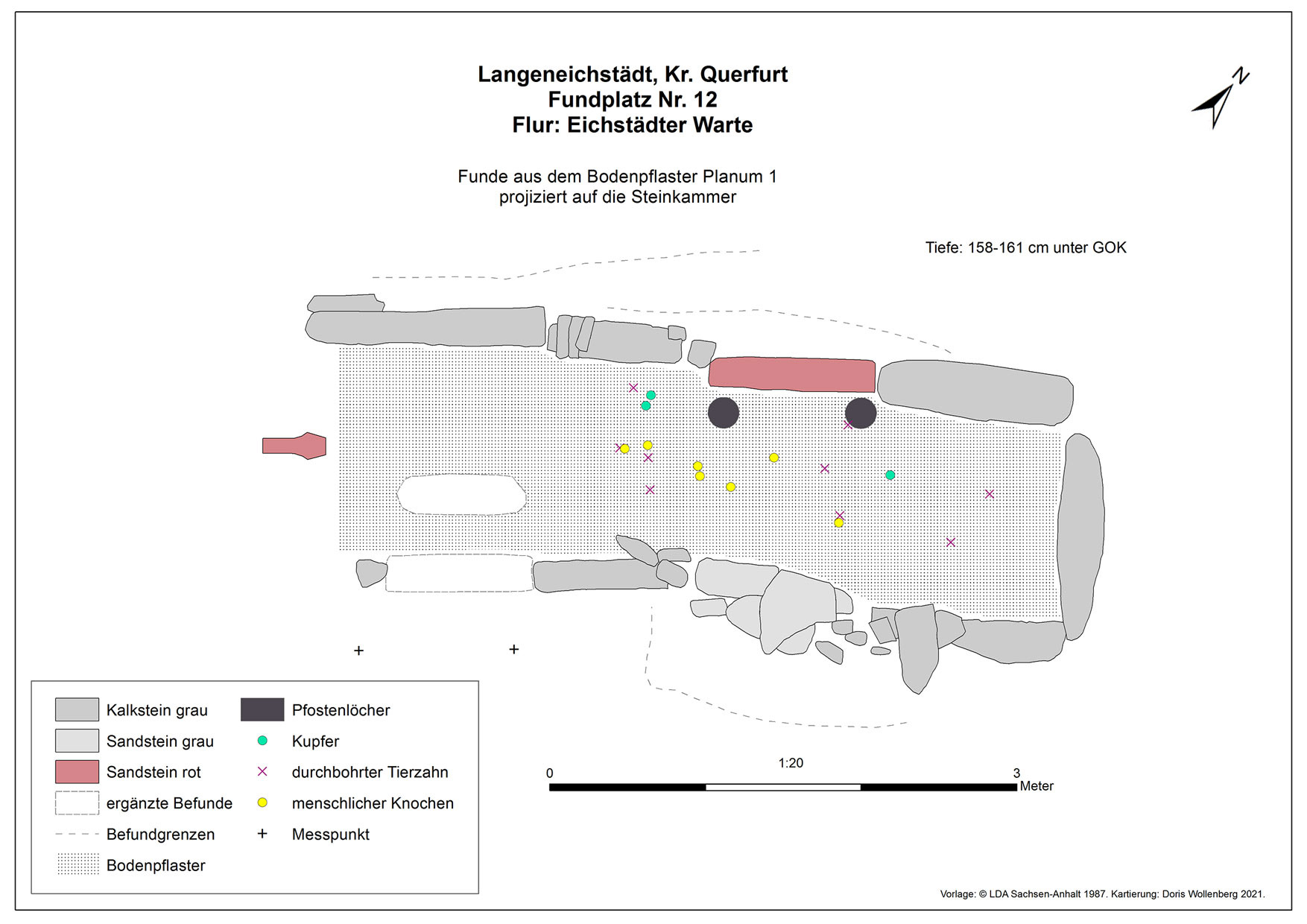
copper sheath
The object belongs to the few copper finds of this period. Several small drill holes are visible at the edges. The copper sheath was probably originally worn as chain jewellery.
Charcoal sample
Prehistoric vandalism?
A charcoal sample from the plaster screed of the uppermost floor layer yielded a radiocarbon date of 2890–2630 BC. The last phase of use of the tomb could thus be related to the Corded Ware culture (2800–2050 BC). However, finds of the Corded Ware culture are missing in Langeneichstädt. The phenomenon of adopting or disturbing older tombs by the Corded Ware culture has been documented several times in Saxony-Anhalt.
The adoption of graves of predecessor cultures was sometimes accompanied by deliberate destruction.
Horn core
In the middle of the burial chamber several bovine horn cores as well as animal bones were recovered. These are probably offerings in the context of the funerary ritual. Horn cores are frequently found in Neolithic times in graves, but also in circular ditched enclosures. In the Bernburg culture of Saxony-Anhalt, also cattle burials with wagon and yoke are known.
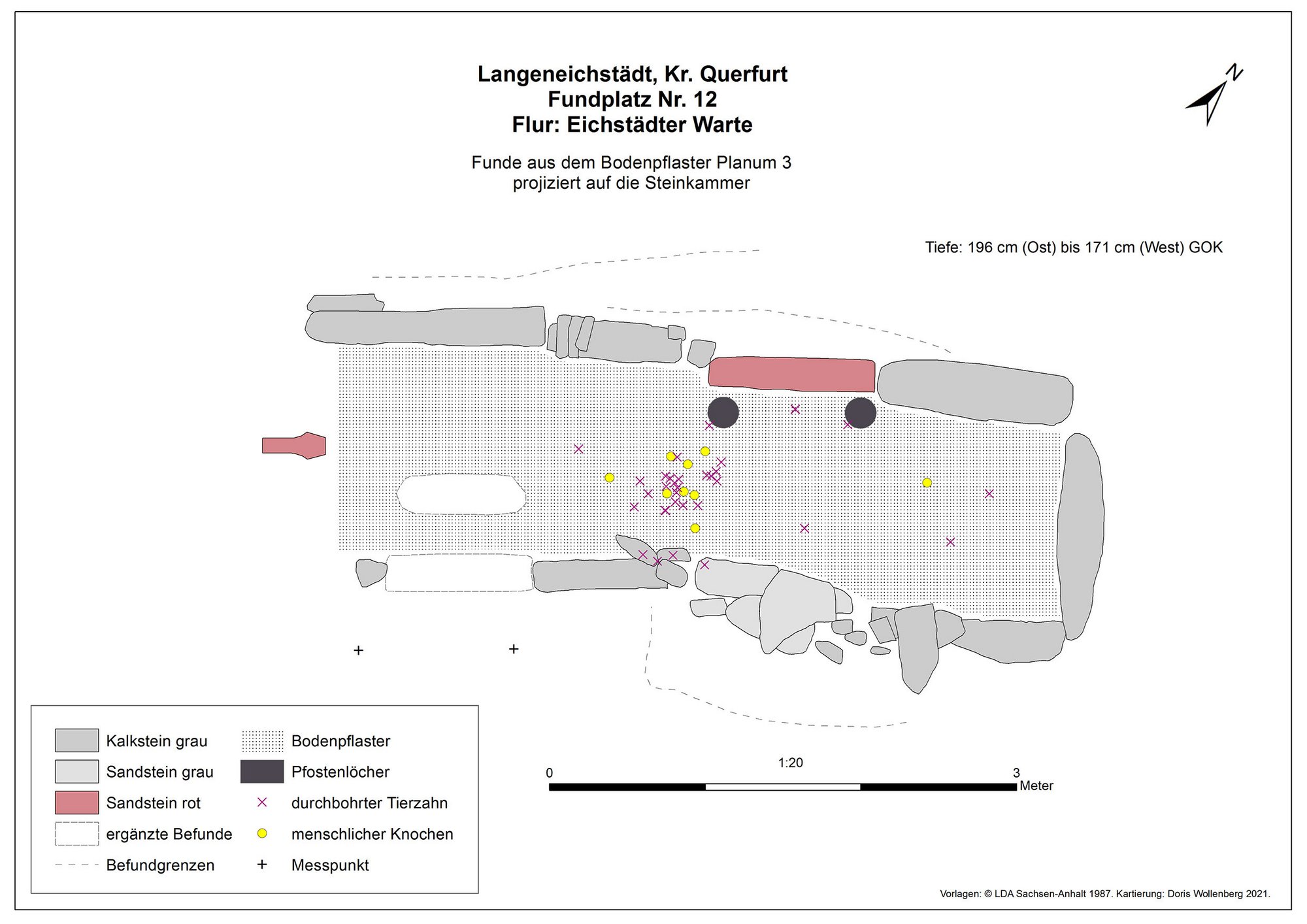
Human bones
Only a few, fragmented human skeletal remains were recovered from the lowest planum in the chamber. A foot bone from this area provided two new radiocarbon dates, by which one of the oldest occupation phases of the tomb could be dated absolutely. The two samples date to the period between 3369 and 3105 BC. They prove that the chamber tomb was already built during the Walternienburg culture (3350–3100 BC) or Salzmünde culture (3375 to 3100 BC) and not, as previously sometimes assumed, by the Bernburg culture (3100–2800 BC).
Canine teeth of dogs
49 perforated canine teeth of dogs or wolves alone come from the third planum in the chamber. Like the other finds, they are concentrated in the middle of the burial chamber. Perforated animal teeth were usually part of the personal possessions of the dead. They were threaded onto necklaces and worn as jewellery or used as dress trimmings. Due to frequent disturbances of the burial chamber, however, the original find situation can no longer be reconstructed.
![Flint blade, facetted. © LDA, photo: J. Lipták. [Translate to English:] Flintklinge, grau, facettiert](/fileadmin/media/langeneichstaedt/funde/langeneichstaedt_silexgeraet_va_823__g_2000x1333.jpg)
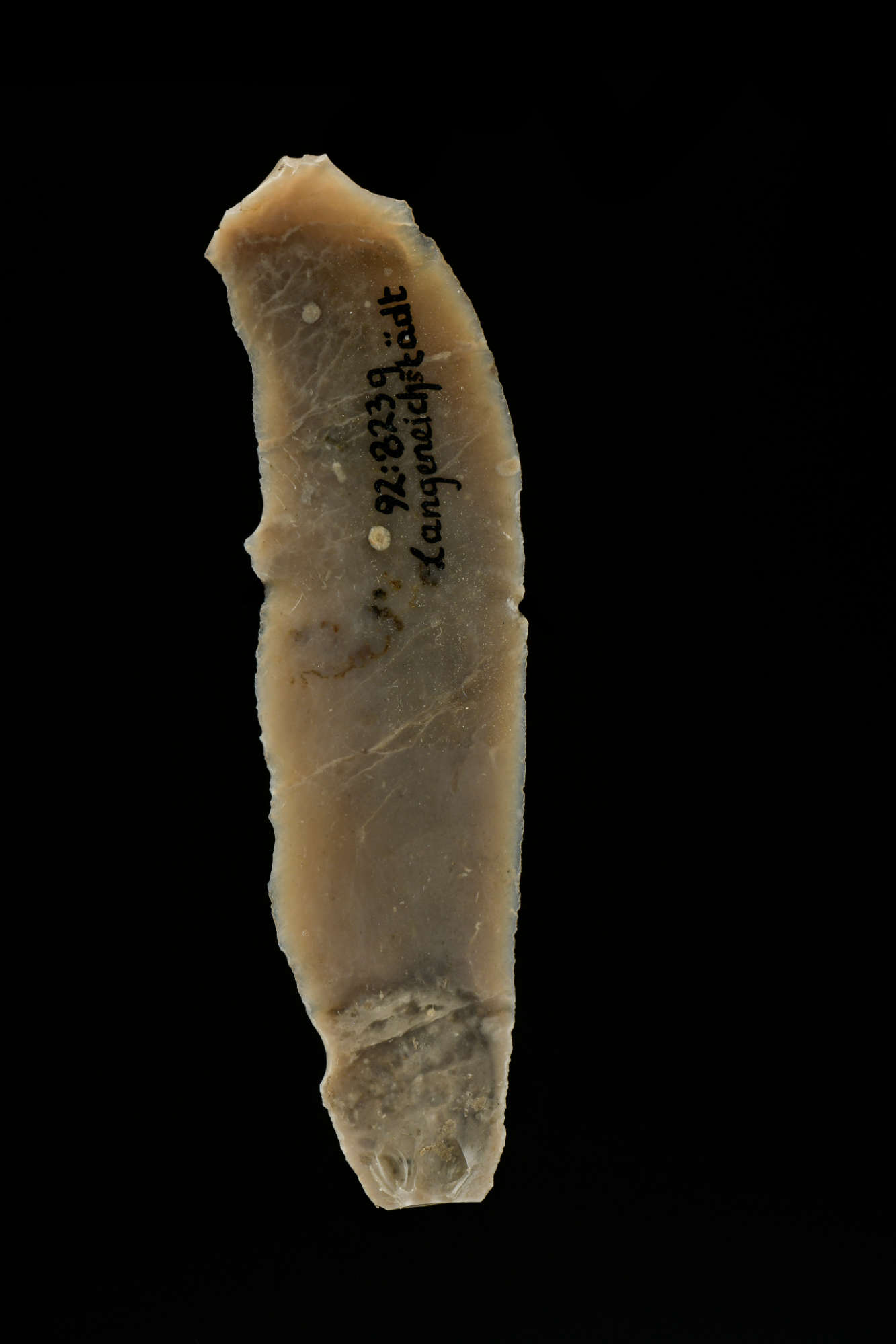
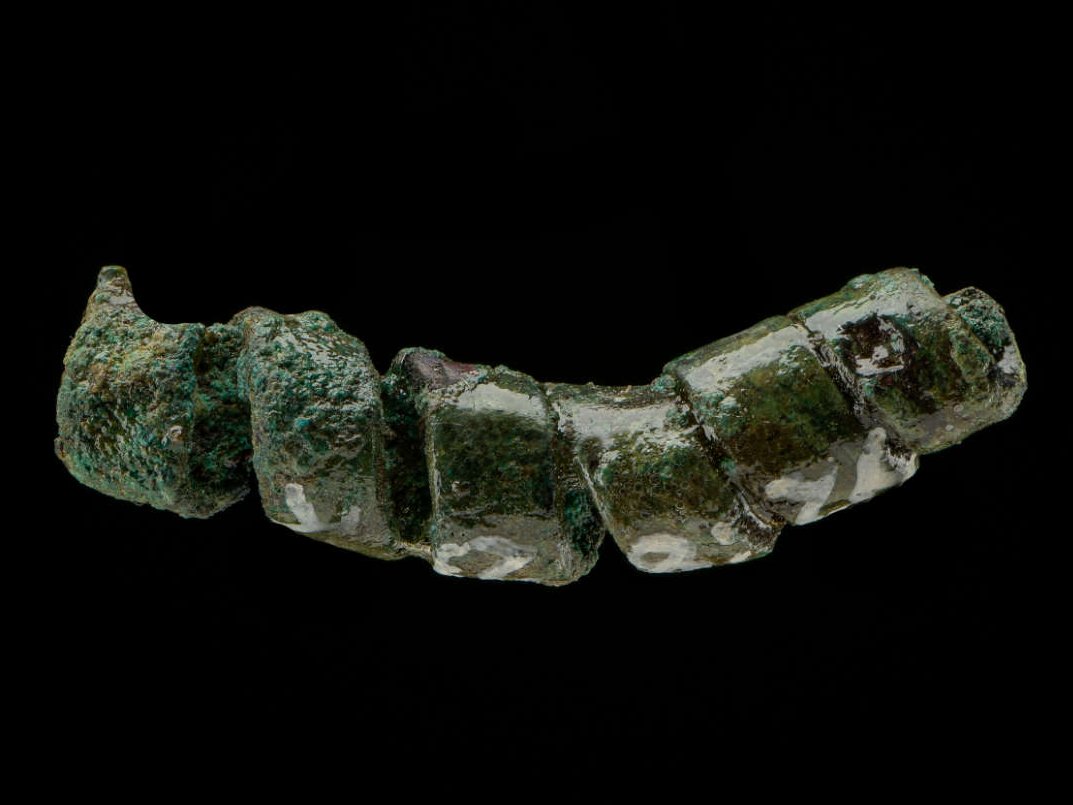
![The Dolmen Goddess menhir [Translate to English:] Die Dolmengöttin von Langeneichstädt](/fileadmin/media/langeneichstaedt/fotos-menhir/dolmengoettin-langeneichstaed-800x1149.jpg)
![The menhir with Dolmen Goddess in situ. [Translate to English:] Menhir mit Dolmengöttin in situ](/fileadmin/media/langeneichstaedt/grabungsfotos/menhir-in-situ-von-norden-1306x985.jpg)
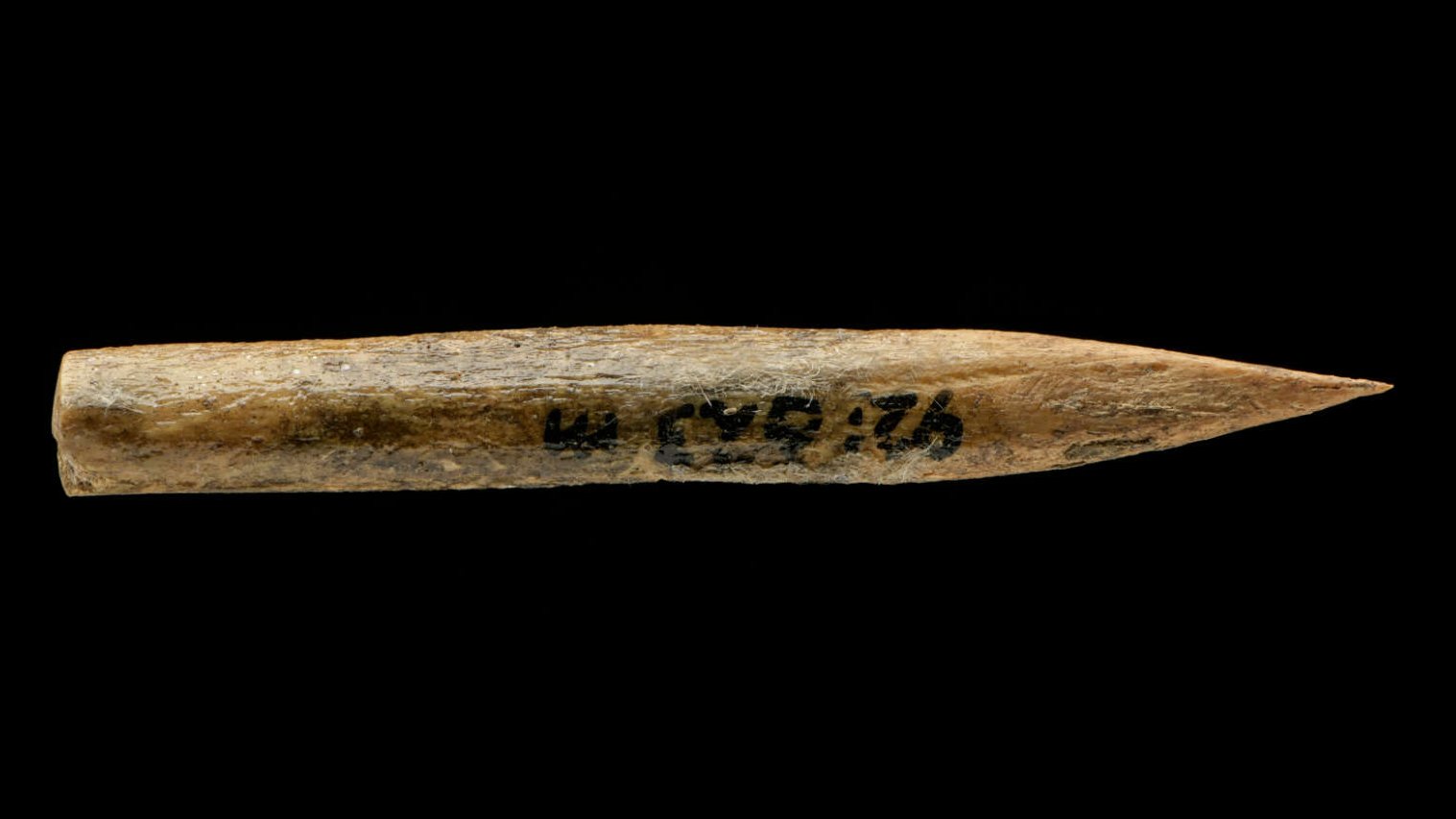
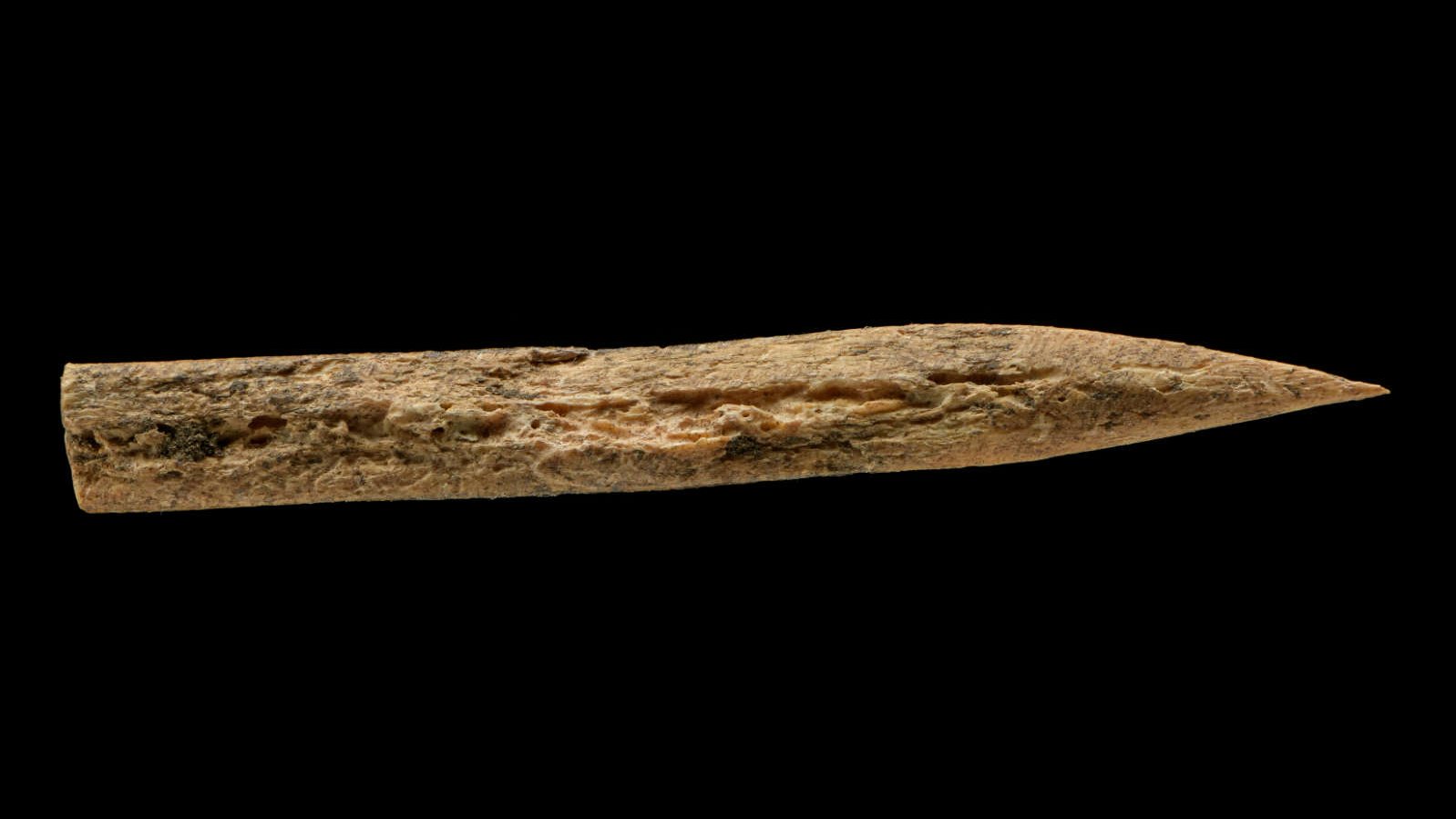
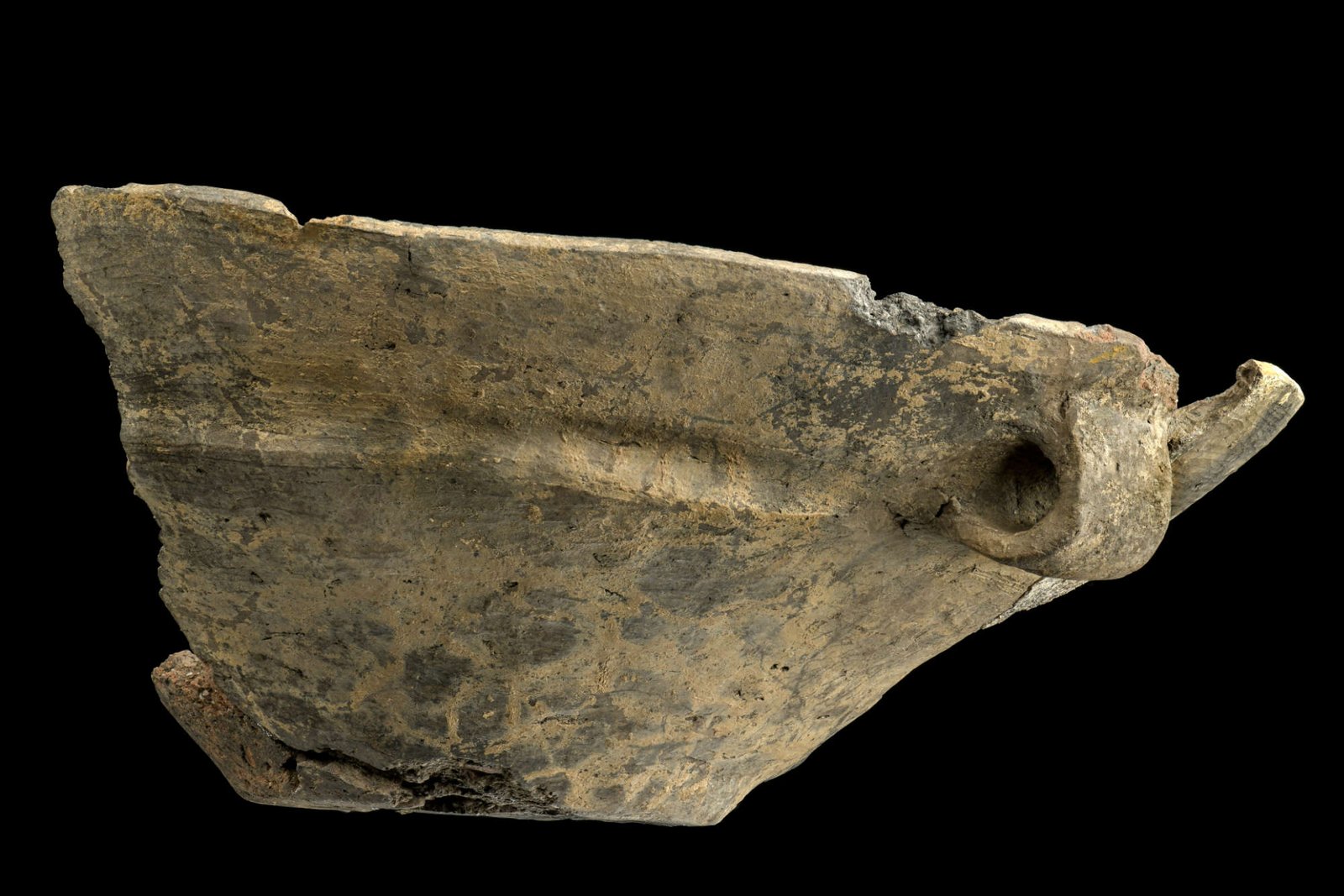
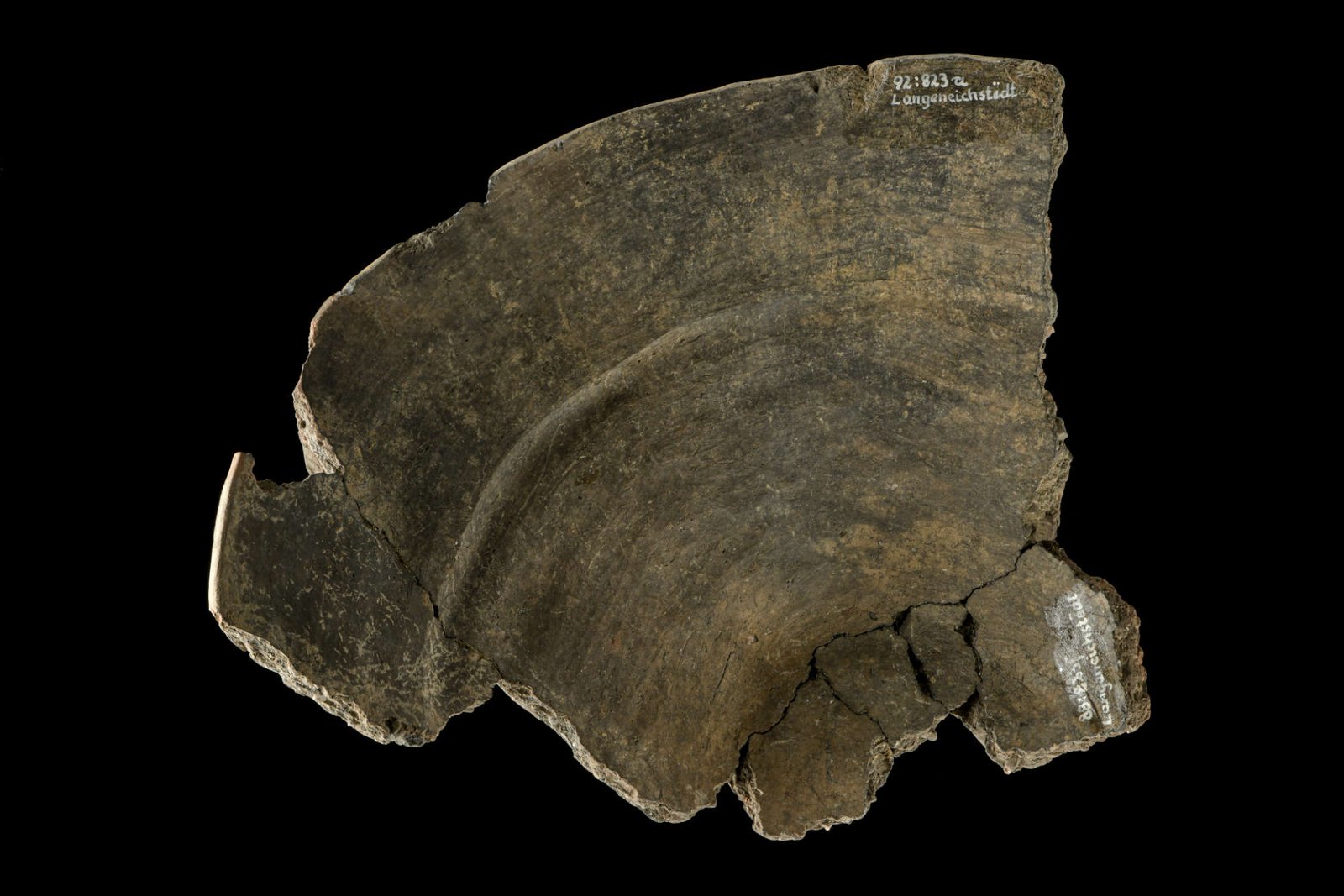
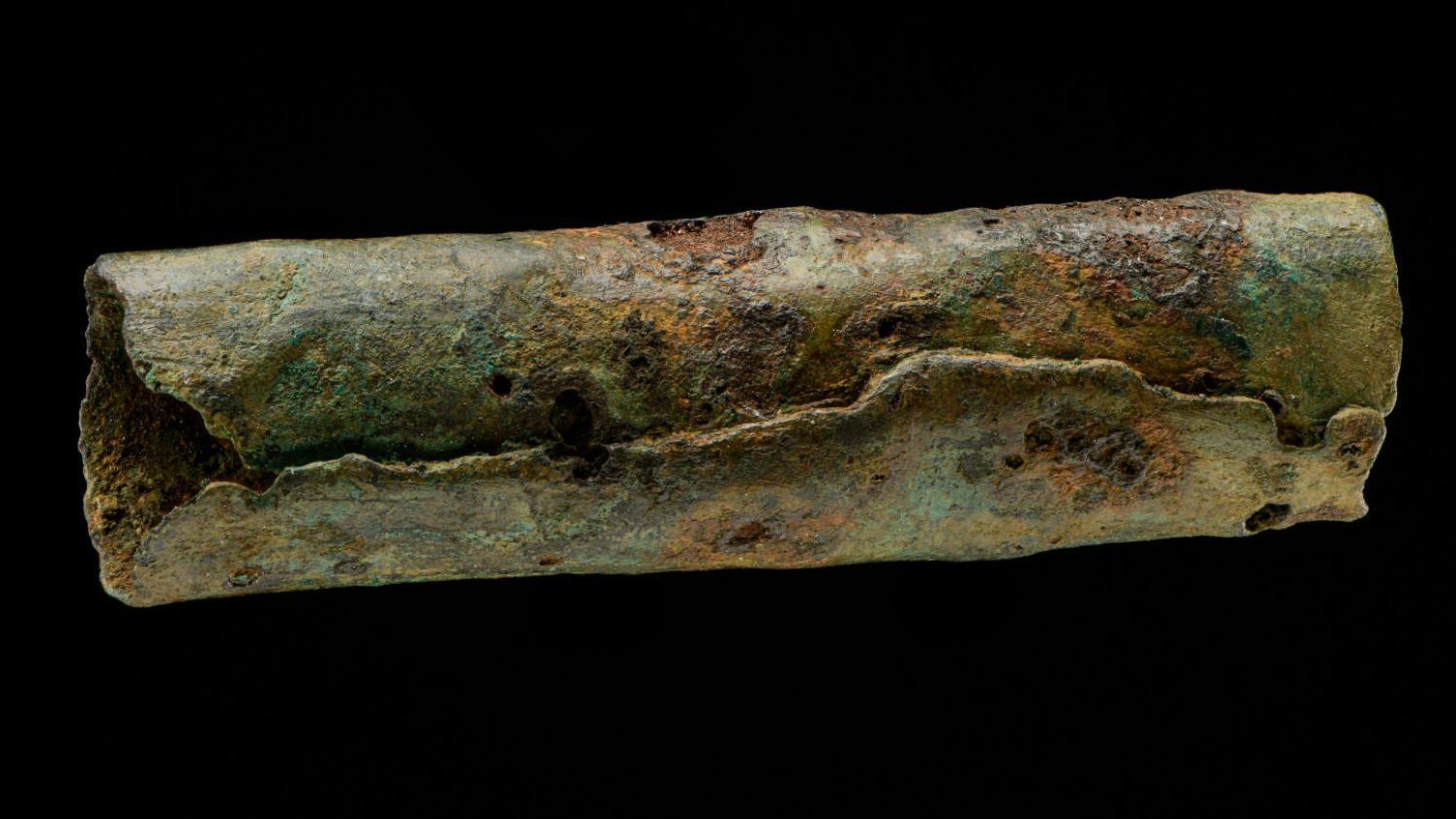
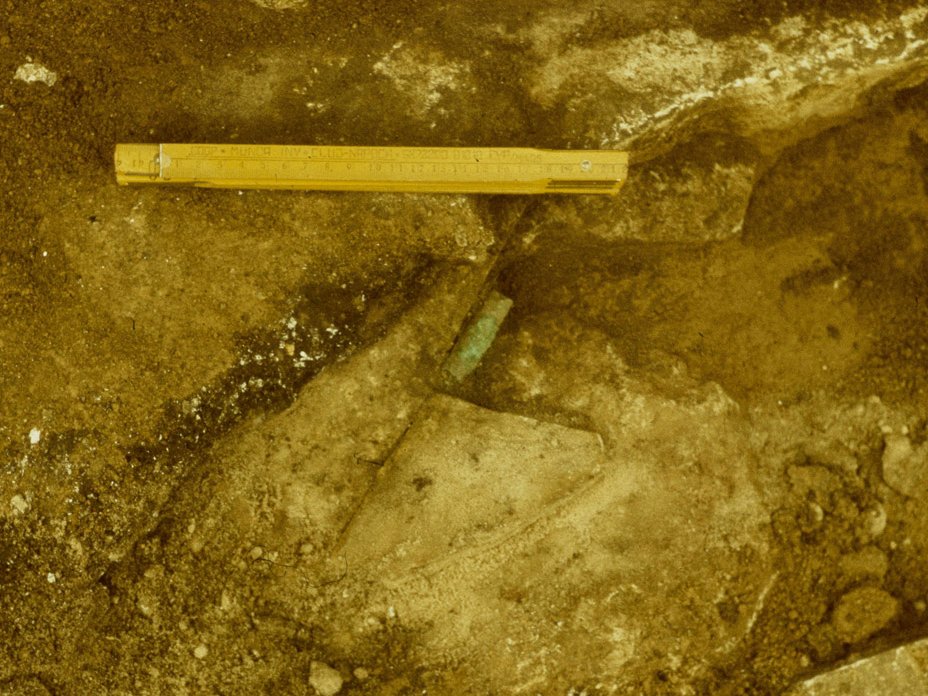
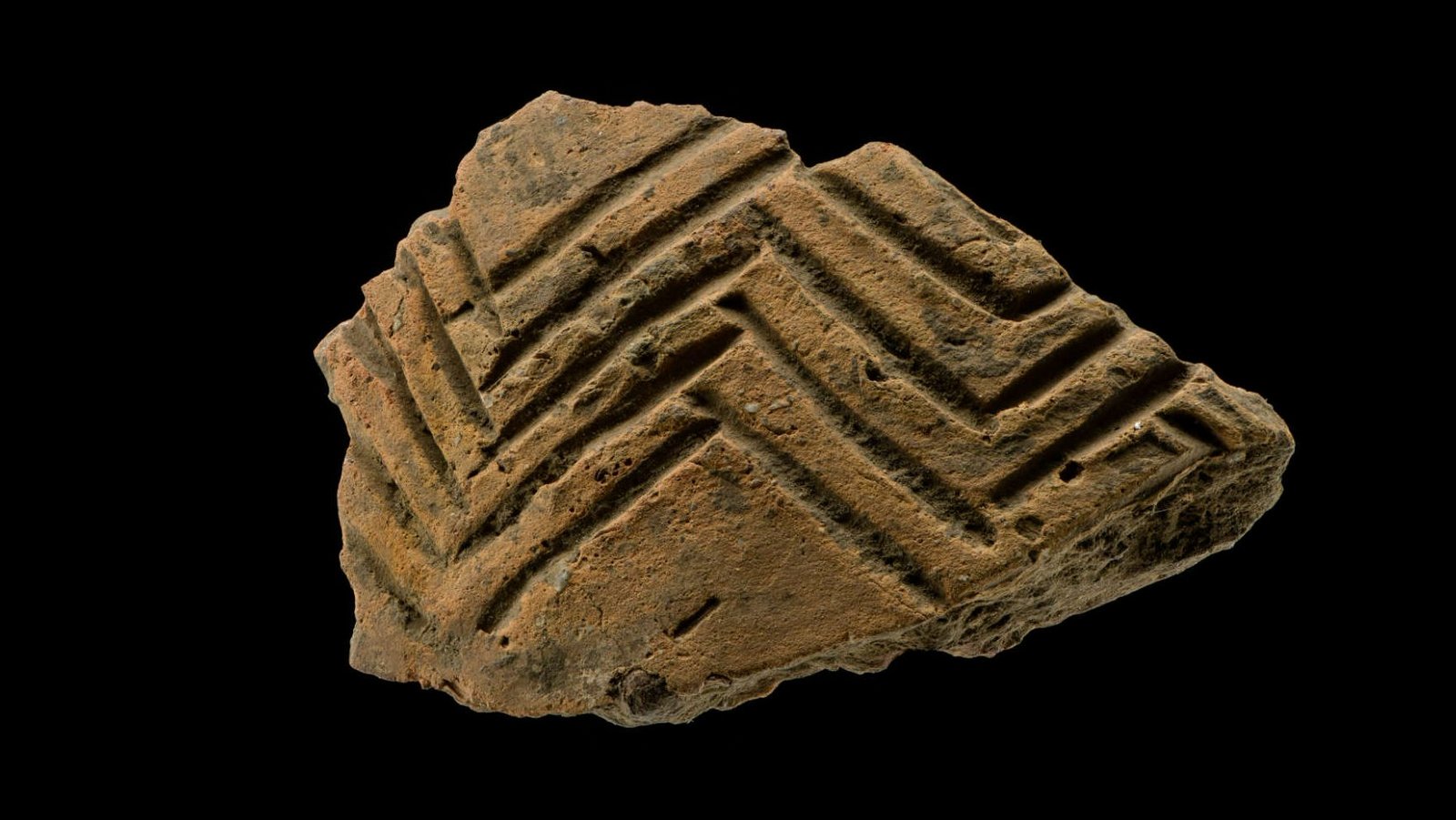
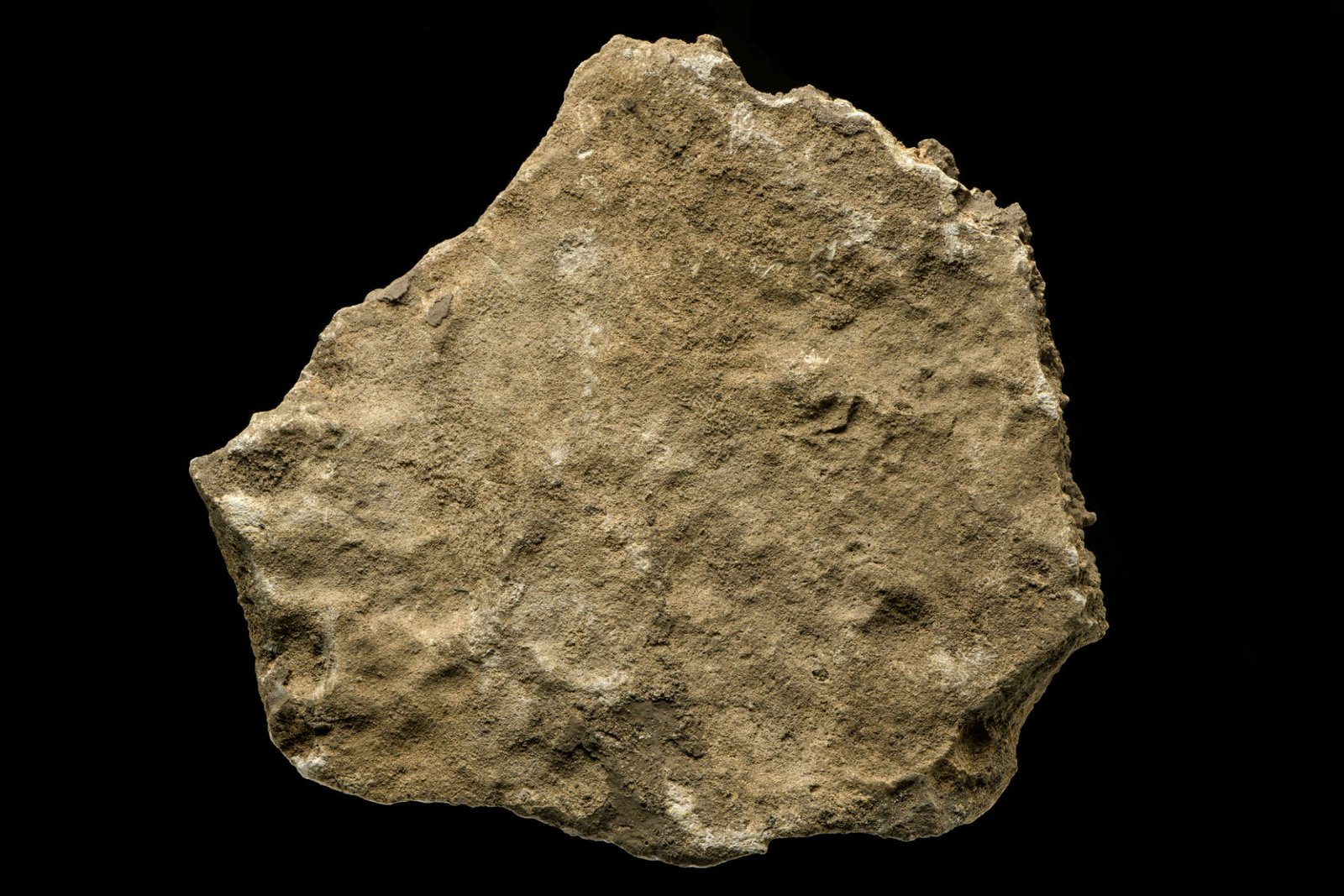
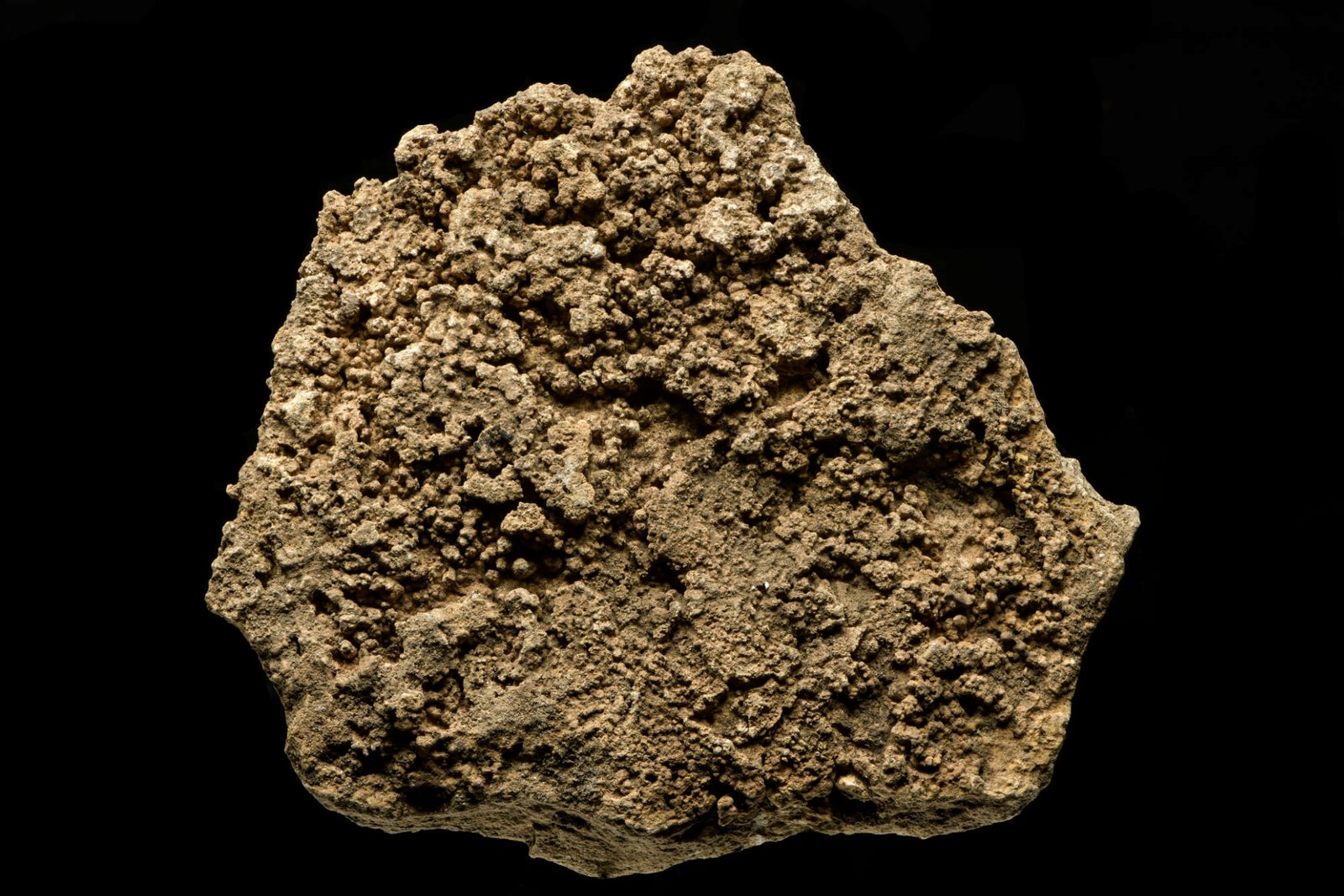
![Bovine horn core. © LDA, photo: Juraj Lipták. [Translate to English:] Hornzapfen eines Rindes. © LDA, Foto: Juraj Lipták.](/fileadmin/_processed_/3/e/csm_goseck_hk_2005_452g_hornzapfen_rind_1600x1200_a32bf5ac31.jpg)
